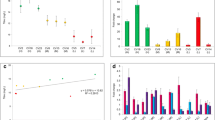Abstract
The long-term stability of high-level expression is the mostimportant factor to consider when choosing cell lines for the expression of recombinant proteins. Declining volumetricyields in large-scale fermentation can be caused by changes affecting the cell population as a whole such as loss in viability, depletion of nutrients or accumulation of metabolites affecting cell growth. Alternatively, geneticinstability may lead to the outgrowth of a less productive,metabolically favored sub-population. Currently a variety ofparameters are measured to monitor the condition of cells infermenters including glucose uptake, lactate accumulation andoxygen consumption; in addition, periodic viable cell countsallow the determination of the growth rate and viability of the population. All of these methods measure the condition ofthe cell population as a whole and changes must involve a significantly large proportion of the total culture in orderto be detectable. Here we report on a method that allows theevaluation of the productivity of individual cells. Using the gel microdrop secretion assay, we detected the appearance ofa sub-population of cells with lower productivity. Subsequentanalysis of the culture confirmed the existence of lower productivity cells with a lower vector copy number. Therefore,the single cell secretion assay proved to be a rapid method todetect and isolate a low productivity variant of the producer cell line.
Similar content being viewed by others
References
Albano CR, Randers-Eichhorn L, Bentlet WE and Rao G (1998) Green fluorescent protein as a real time quantitative reporter of heterologous protein production. Biotechnol Prog 14: 351–354.
Al-Rubeai M and Emery N (1993) Flow cytometry in animal cell culture. Bio/Technology 11: 572–579.
Ausubel FM, Brent R, Moore DM, Kingston RE, Seidman JG, Smith JA and Struhl K (1990) Current Protocols in Molecular Biology, Wiley Interscience, New York.
Chuck AS and Palsson BO (1992) Population balance between producing and nonproducing hybridoma clones is very sensitive to serum level, state of inoculum, and medium composition. Biotechnol Bioeng 39: 354–360.
Gandor C, Leist C, Fiechter A and Asselbergs FAM (1995) Amplification and expression of recombinant genes in serumindependent Chinese hamster ovary cells. FEBS Letters 377: 290–294.
Kaufman RJ, Wasley LC, Spiliotes AJ, Gossels SD, Latt SA, Larsen GR and Kay RM (1985) Coamplification and coexpression of human tissue-type plasminogen activator and murine dihydrofolate reductase sequences in Chinese hamster ovary cells. Mol Cell Biol 5: 1750–1759.
Lubiniecki AS, Anumula K, Callaway J, L'Italien J, Oka M, Okita B, Wasserman G, Zabriske D, Arathoon R and Builder S (1992) Effects of fermentation on product consistency. Dev Biol Stand 76: 105–115.
McKinney KL, Dilwirth R and Belfort G (1991) Manipulation of heterogeneous hybridoma cultures for overproduction of monoclonal antibodies. Biotechnol Prog 7: 445–454.
Powell KT and Weaver JC (1990) Gel microdroplets and flow cytometry: Rapid determination of antibody secretion by individual cells with a cell population. Bio/Technology 8: 333–337.
Rhoads DD, Dixit A and Roufa D (1986) Primary structure of human ribosomal protein S14 and the gene that encodes it. Mol Cell Biol 6: 2774–2783.
Swift RJ, Wiebe MG, Robson GD and Trinci APJ (1998) Recombinant glucoamylase production byAspergillus niger B1 in chemostat and pH auxostat cultures. Fungal Genet Biol 25: 100–109.
Sugiura T and Kakuzaki M (1998) Dynamics of recombinant protein production by mammalian cells in immobilized perfusion culture. Enzyme Microb Technol 22: 699–704.
Toledo F, Le Roscouet D, Buttin G and Debatisse M (1992) Coamplified markers alternate in megabase long chromosomal inverted repeats and cluster independently in interphase nuclei at early steps of mammalian gene amplification. EMBO J 11: 2665–2673.
Urlaub G and Chasin LA (1980) Isolation of Chinese hamster cell mutants deficient in dihydrofolate reductase activity. Proc Natl Acad Sci USA 77: 4216–4220.
Withers JM, Swift RJ, Wiebe MG, Robson GD, Punt PJ, van der Hondel CAM and Trinci APJ (1998) Optimization and stability of glucoamylase production by recombinant strains ofAspergillus niger in chemostat culture. Biotechnol Bioeng 59: 407–418.
Weaver JC, McGrath P and Adams S (1997) Gel microdrop technology for rapid isolation of rare and high producer cells. Nat Med 3: 583–585.
Author information
Authors and Affiliations
Corresponding author
Rights and permissions
About this article
Cite this article
Hammill, L., Welles, J. & Carson, G.R. The gel microdrop secretion assay: Identification of a low productivity subpopulation arising during the production of human antibody in CHO cells. Cytotechnology 34, 27–37 (2000). https://doi.org/10.1023/A:1008186113245
Issue Date:
DOI: https://doi.org/10.1023/A:1008186113245




